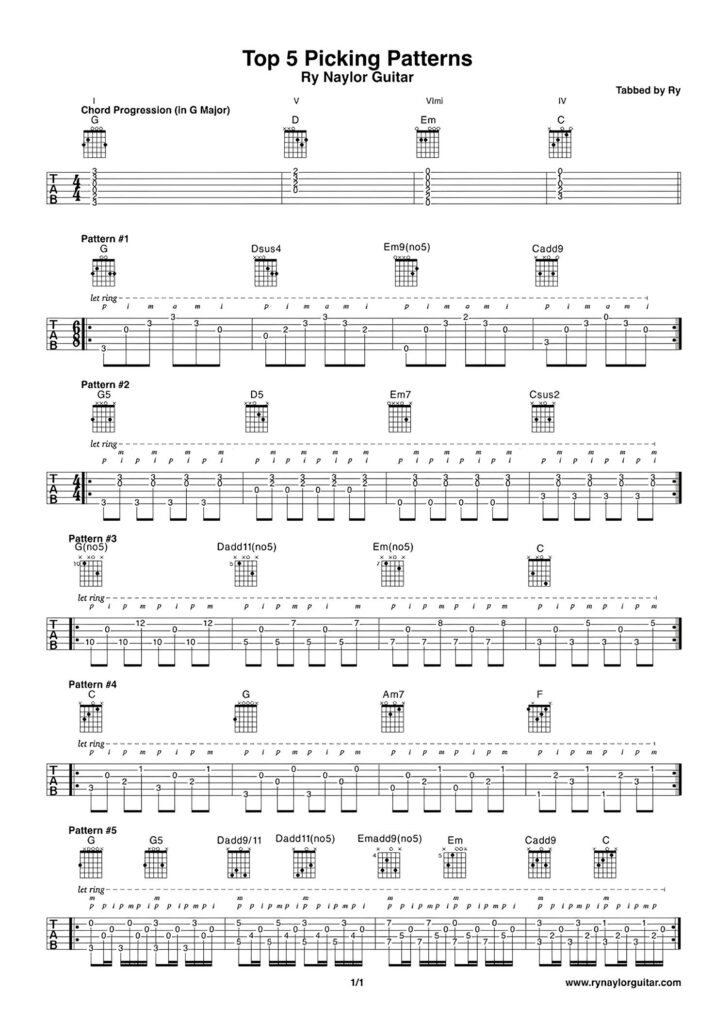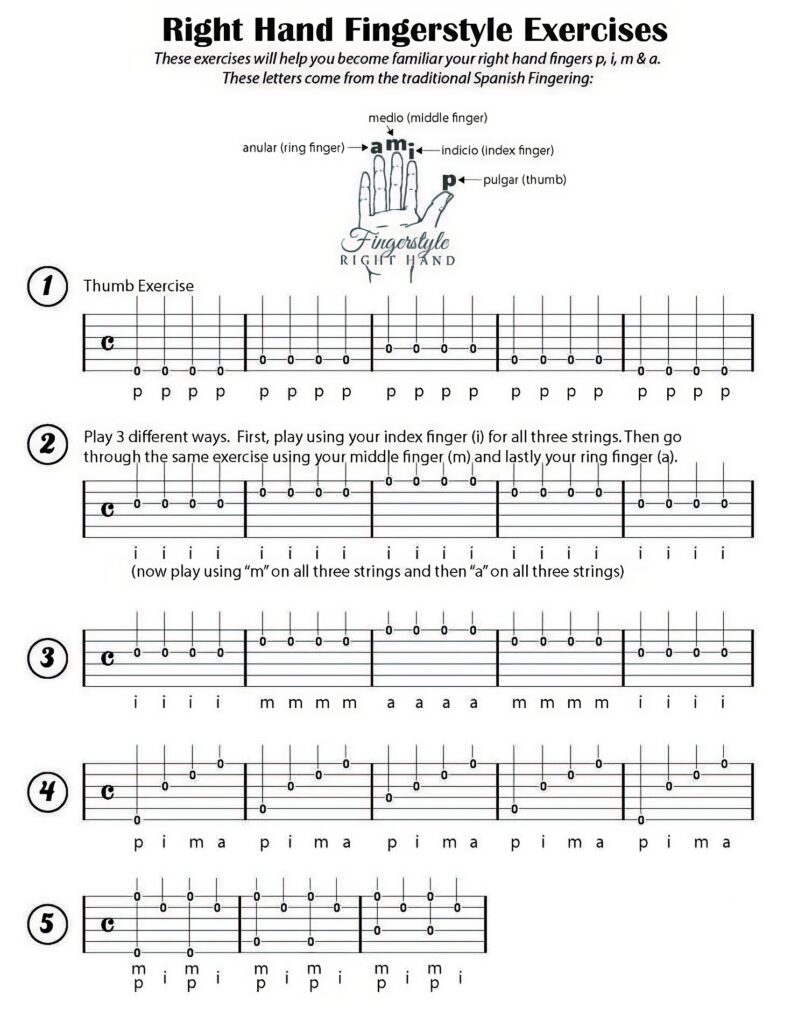Fingerpicking is a captivating technique that allows guitarists to create intricate melodies, harmonies, and rhythms using their fingers instead of a pick. From folk ballads to classical masterpieces to contemporary pop hits, fingerpicking patterns add depth, texture, and emotion to music in a way that strumming alone cannot replicate. In this guide, we’ll delve into the world of guitar fingerpicking patterns, uncovering the techniques, styles, and creativity behind this captivating art form.


Understanding Fingerpicking Basics:
Fingerpicking involves using your fingertips (and sometimes your fingernails) to pluck individual strings on the guitar, producing a melodic or rhythmic pattern. Unlike strumming, which typically involves a more generalized motion, fingerpicking requires precision and control over each finger’s movement. The thumb is often assigned to the bass strings (E, A, and D), while the index, middle, and ring fingers handle the treble strings (G, B, and high E).
Common Fingerpicking Patterns:
- Travis Picking: Named after country guitarist Merle Travis, Travis picking is a popular fingerpicking pattern characterized by alternating bass notes played with the thumb and melody notes played with the fingers. It’s commonly used in folk, blues, and country music and provides a steady, driving rhythm.
- Arpeggios: Arpeggios involve playing the notes of a chord individually, rather than simultaneously. This technique creates a cascading, harp-like effect and is often used in classical, flamenco, and fingerstyle guitar music to add richness and complexity to chord progressions.
- Thumb-Index-Middle Pattern: This fingerpicking pattern involves a repeating sequence of thumb, index, and middle finger movements, with the thumb playing the bass notes and the fingers playing the melody notes. It’s versatile and can be adapted to various musical styles and genres.
- Roll Patterns: Roll patterns involve rolling or arpeggiating the fingers across the strings in a specific sequence, creating a fluid and continuous motion. These patterns are commonly used in bluegrass, Celtic, and fingerstyle guitar music to create a sense of momentum and flow.
Tips for Mastering Fingerpicking Patterns:
- Start slow: Begin by practicing fingerpicking patterns at a slow and steady tempo, focusing on accuracy and consistency.
- Use a metronome: Practice with a metronome to improve your timing and rhythm, gradually increasing the tempo as you become more comfortable.
- Focus on finger independence: Work on developing independence and coordination between your thumb and fingers, allowing each digit to move freely and confidently.
- Experiment with dynamics: Explore different dynamics and accents to add depth and expression to your fingerpicking patterns, emphasizing melody notes and bass lines as needed.
Unlocking Your Fingerpicking Potential:
Fingerpicking patterns offer endless possibilities for self-expression and creativity on the guitar. Whether you’re a beginner exploring your first patterns or an experienced guitarist refining your technique, fingerpicking opens doors to new musical horizons and allows you to tell your story through the strings of your instrument. So take the time to explore different patterns, experiment with styles and genres, and let your fingers dance across the fretboard with grace and precision. The journey awaits—let your fingers lead the way!







